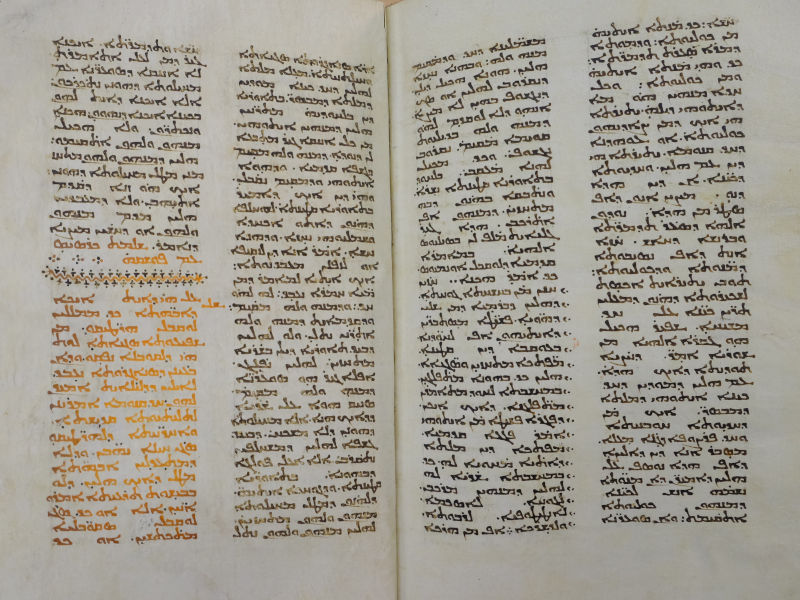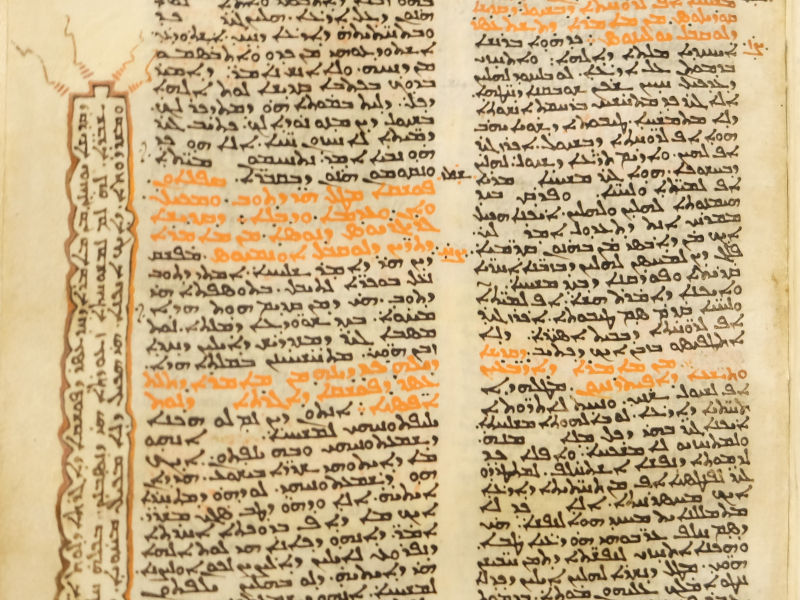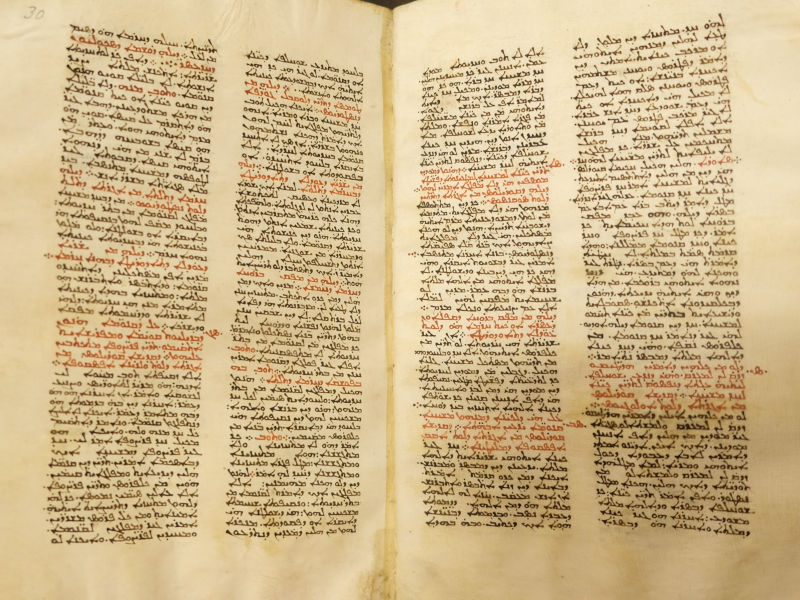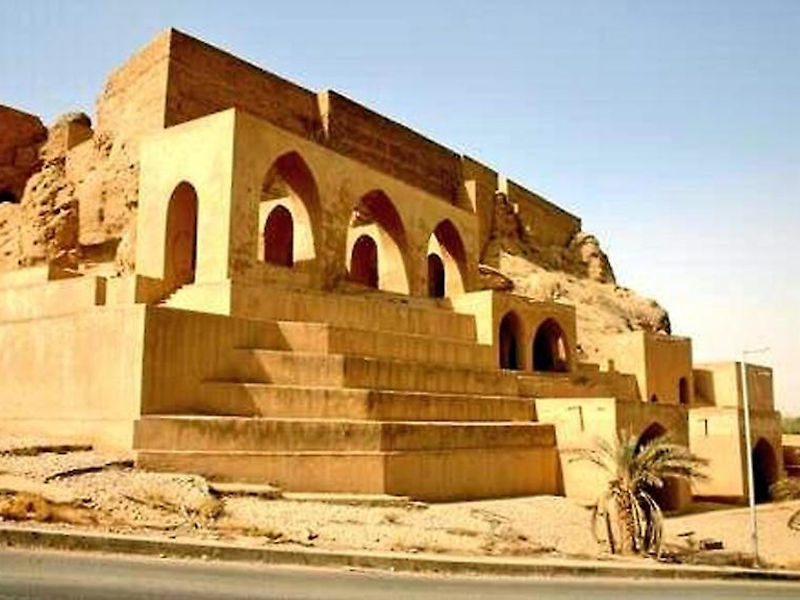About
The project: questions and objectives
Florilegia as a privileged vehicle for the knowledge of Greek Christian writers in Syriac
The penetration of Late Antique Greek Christian thought into Syriac culture enjoyed scholarly interest throughout the 20th century.
Many works of Greek Christian thinkers were integrally translated from the 4th century CE; the translation movement had a bloom between the 5th and the 7th centuries. Scholars especially focused on those translated texts whose Greek original is lost, e.g., the highly relevant "Chapters on Knowledge" of Evagrius of Pontus, originally written in the 4th and translated in the 5th century. Other Syriac translations of Greek works were studied because of their value for the establishment of the critical text of the Greek, since manuscripts transmitting the Syriac versions are often more ancient than the whole Greek manuscript tradition.
The practice of translating Greek patristic writings in their entirety was lively between the 5th and the 7th-8th centuries, but did not last. Syriac Christians did not completely stop translating and reading integral texts, but largely privileged the florilegium.

What is a florilegium? A florilegium can be defined as a “juxtaposition of textual units, bound together by a more or less tenuous thematic line” (Maniaci 2004, 84). These textual units are usually excerpts from writings of different authors.
From the 6th century onwards, florilegia progressively became the dominant (though not the only) form through which Syriac and Christian Arabic intellectuals shaped their own original view of Greek Christianity, by selecting and rearranging the translated texts of Greek Christian authoritative authors, the “Church fathers”, in new collections, and thus producing new knowledge. They mostly stem from the two pivotal periods of Syriac Christianity: the Byzantine phase (6th–7th centuries), in which florilegia are produced by Syriac Christians in a context of Greco-Syriac bilingualism within the borders of the Roman Empire, under the pressure of Christological controversies; and the Abbasid phase (8th–10th century), in which the Islamic environment and the confrontation between different Syriac Churches are the complementary factors determining the production of florilegia. This chronological position attests to their absolute relevance for the development of patristic Christianity as a Euro-Mediterranean paradigm of knowledge outside the borders of the Greek-speaking world; despite this, they have hardly ever been studied, and have only been pillaged by scholars of the 19th and the 20th centuries, who picked and published from them some interesting passages of works whose Greek original is lost.
Multiple-text manuscripts: recent developments
Important progress has been made in recent years in the study of manuscripts containing a plurality of texts. Terminological definitions and cataloguing methods have been established; codicological issues have been investigated (Maniaci 2004; Andrist 2006; Friedrich–Schwarke 2016).
These manuscripts have been defined as “multiple-text manuscripts”, the study of which is a field in rapid and constant expansion (see e.g. the new volume Friedrich–Schwarke 2016). From the point of view of its contents, a multiple-text manuscript contains diverse writings that are not by the same author and do not belong to the same work.
This textual plurality can be inspired by organizational criteria. Many domains have benefited from this renewal. A broad phenomenology of “reading in excerpts” as a knowledge-organizing practice, transversal to many cultures and covering fields ranging from Egyptology to Late Western Medieval philosophy, has been recently proposed (Morlet 2015; Hamesse 2015, Dusil–Swedler–Schwitter 2017). Greek Byzantine, Coptic (Buzi 2011 and 2016 ), Ethiopic (Bausi 2010 and 2016), and Slavic (Birnbaum 2003; Miltenova 2013) studies have especially enjoyed this scholarly rush. Syriac patristic florilegia, however, have remained largely untapped and almost untouched by this renewal, although they are among the most ancient extant Christian florilegia.

Our objectives
FLOS’s overall objective is to examine Syriac florilegia and the works that used them as laboratories of culture, where intellectual creativity was prompted by the needs of an entangled religious world. This endeavour will illuminate the creative contribution of Syriac and Arabic-speaking Christians to the transformation of Greek Christian thought in the multicultural context of early ‘Abbasid Mesopotamia’.
The project aims to stress that Greek Christian writings were not simply or passively ‘received’ by Syriac and Arabic-speaking Christians, but also remoulded into fresh religious knowledge suitable to new contexts.
FLOS's Specific objective:
- Publication of digital critical editions of a set of Syriac patristic florilegia written and copied between the 8th and the 10th centuries, which will be readable and searchable in multiple ways.
These editions will also allow for an in-depth study of how patristic excerpts were clustered in florilegia around theological themes (incarnation, Trinity, resurrection and the afterlife etc., refutation of various heresies on these topics), and how this arrangement of the excerpts was used to fix those themes in authoritative in order to face the needs of religious controversy and apology under the ‘Abbasids. - Mapping of the dissemination of patristic culture among Syriac and Christian Arabic authors of the 8th-11th centuries. FLOS intends to show that the reinvention of the Greek “fathers” by Syriac Christians was creative insofar as it structured the production of original knowledge – whether expressed in Syriac or Arabic. Indeed, the selection of the Greek authors to be studied and quoted gave shape to new ideas on a set of dogmatic topics that were on the agenda of the day in the inter-confessional and interreligious dialogue.
FLOS intends to study the use of florilegia, and the presence of patristic culture generally, in a large number of disregarded dogmatic texts written under Islamic rule by Syriac authors of the 8th–9th centuries, like Moses bar Kipho, John of Dara, or Timothy I, and early Christian Arabic writers of the 9th–11th centuries, like Yaḥyā ibn ‘Adī, ‘Isā ibn Zur‘a, and Yaḥyā ibn Jarīr.
Patristic excerpts, once canonized in florilegia, were reused as standard citation material by these authors, who wrote mainly with aims of confronting other Christian confessions and Islam. Thus, their writings are a source of first rank to show how the patristic canon contributed to creating new religious knowledge for the challenges set by the cultural and religious environment of the Islamicate world. Polemical and apologetic works of Syriac and Christian Arabic authors of the 8th–11th centuries are relatively understudied sources and have rarely been explored as a textual corpus based on the same patristic strategies. By studying these writings, we will understand how concretely patristic knowledge was employed to enforce the ideal boundaries between confessional identities. On the other hand, however, confessional borders under Abbasid rule were porous; with a systematic investigation of patristic knowledge in writers of different Christian confessions, we also intend to show how books as well as people crossed borders, and how the Greek “fathers” came to be a common ground of confrontation among Christians under Islamic rule.
Finally, and most importantly, we will achieve a more precise understanding of the character of the religious knowledge that Christian scholars brought into their conversation with Muslim intellectuals “in one of the most vibrant periods of human history, the heyday of the ‘Abbāsid age” (Adamson-Pormann 2012).
Methodology
Classification and choice of the sources
Syriac patristic florilegia can be classified according to two different approaches. From a typological standpoint, patristic florilegia can be divided into three major categories:
- the exegetical florilegium (see most recently Romeny 2004 and 2007);
- the ascetical florilegium (Kessel 2015);
- the florilegium of speculative character (“dogmatic florilegium” in the definition of Richard 1950), usually aimed at the refutation of heresies.
Whereas the former two have been studied, the latter typology is the focus of FLOS and, except for a series of sparse studies by Albert Van Roey, it is still largely uncharted territory.
From a diachronic point of view, a distinction must be introduced within the category of the dogmatic florilegia. A small number of them (presumably less than five, among which the most prominent is certainly London, British Library Add. 12156) are preserved in manuscripts that are dated to the 6th and the 7th centuries, produced under Byzantine rule, whereas the majority are contained in manuscripts of the 8th–10th centuries, copied under Abbasid rule.

Following these classifications, FLOS will especially focus on a set of large dogmatic florilegia that are highly representative of the second age outlined above. They are preserved in four manuscripts at the British Library, Add. 12155, 14532, 14533, and 14538, and in one of the Mingana Collection of the Cadbury Research Library, Birmingham, Mingana Syr. 69. Before coming to London, for almost a millennium these manuscripts had belonged to the collection of the Egyptian monastery of Dayr al-Suryān, from which most of the Syriac holdings of the British Library originated at the end of the 19th century.
The multiple-text manuscripts of the 8th–10th centuries listed above are a product of the intellectual activity of the West Syrian Church, of Miaphysite confession. These manuscripts contain patristic florilegia that attest exemplarily to a full-fledged patristic culture organized through anthological selections.
They are more representative of this phase than other dogmatic florilegia of the same age, among which they stand out for two reasons:
- They bear witness to a high degree of organization of the patristic sources: the patristic excerpts are not only collected, but organized around dogmatic topics in a series of “patchwork-treatises” on the relevant topics, provided with their own titles. They thus vividly reflect a coherent editorial project of the compiler.
- Some of these thematic collections, or part of them, recur in almost the same form in more than one of the five manuscripts. Thanks to these characteristics, these florilegia offer us the rare possibility to study in the making the dynamics of transmission, selection, and arrangement of the patristic sources.
The digital editions
The data emerging from the digital editions will have to be analysed. FLOS will study the construction strategies of the edited florilegia in order to concretely determine their contribution to the reinvention and canonization of Greek patristic literature.
Firstly, we will explore how patristic excerpts are clustered in “patchwork-treatises” around specific dogmatic themes: creation, incarnation, Trinity, resurrection, etc. We will define what these themes are, what patristic sources are associated with them, and possibly what kind of intellectual and religious environment, within and outside Christianity, prompted the composition of such patchworks.
As a result, we will unravel the compilation strategies underlying the florilegia, thus valorizing the specificity of florilegia as places of creative re-thinking of a long tradition. The proposed study will thus look directly into the laboratory of scribes and compilers, where old sources were reshaped to create a new tradition.
Greek Christian writers and Syro-Arabic literature
FLOS will pursue the first systematic identification, inventory, and analysis of the patristic sources used in theological and philosophical works of Syriac and early Christian Arabic authors of the 8th–11th centuries.
Particular attention will be paid to the ways the patristic sources are employed to fashion concepts that were at stake in the debate between Christian confessions and with Islam (e.g. incarnation, the Unity and Trinity of God, freedom, the angels).
The florilegia edited in this website will emerge as the main (although not the only) basin of patristic citations and concepts from which Syriac and Arabic authors drew for the construction of their dogmatic definitions. We will also investigate those cases where explicit patristic quotations are scant, most notably in Christian Arabic apologetic writings, where they are missing. In the latter cases we will not look for punctual quotations, but for the contents of the dogmatic knowledge in constant comparison with the traditional knowledge displayed in the patristic excerpts of the florilegia. The innovation of FLOS lies in the intention to investigate whether and to what extent even the apologetic literature was implicitly modelled by the patristic tradition.

The corpus
The relevant corpus to be investigated mainly consists of the following works:
- Syriac Miaphysite writings:
- Cyriacus of Tagrit (8th–9th c.): extant works (see Oez 2012);
- Anthony of Tagrit (9th c.): extant works (see Watt 1986);
- Nonnus of Nisibis (9th c.): extant works (see Van Roey 1948);
- John of Dara (9th c.): On Resurrection, On Heretics, On the Soul, On Demons, On Creation, On Paradise, On the Divine Economy, On the Doctrine of the Christians, On Pentecost;
- Moses bar Kipho (9th c.): On Free Will, On the Soul, On Paradise, On the Creation of Angels, On the Angelic Hierarchy, On Resurrection, On the Hexaemeron (for John and Moses see e.g. Vööbus 1975 and 1976; Juckel 2007; Moss 2016);
- Theodosius of Antioch (9th c.): Commentary on the Book of Hierotheus (see Marsh 1927).
- Christian Arabic Miaphysite writings:
- Abu Ra’ita (9th c.), the extant writings (see Graf 1951 and Keating 2006);
- Yaḥyā ibn ‘Adī, dogmatic writings (see Sbath 1929; Endress 1977; Platti 1982 and 1983);
- Ibn Zur‘a (10th c.), extant works (see Sbath 1929; Haddad 1971, and Monferrer-Sala 2010);
- Ibn Jarīr (11th c), Kitāb al-Murshid (see Teule–Swanson 2011). Among other things, Ibn Jarīr was the copyist of the oldest manuscript of al-Fārābī’s Perfect State, and he annotated it with references to Greek patristic writings.
- East Syriac writings:
- Timothy I (8th–9th c.), Epistles;
- Theodore bar Koni (8th–9th c.), Scholion; Isho‘dad of Merw (9th c.), Commentaries on the Old and the New Testament;
- Isho‘ bar Nun (9th c.), Selected Questions on the Old and the New Testament.
